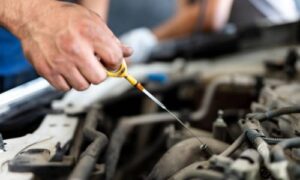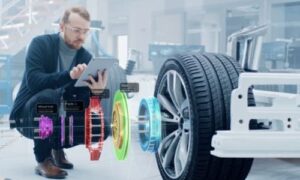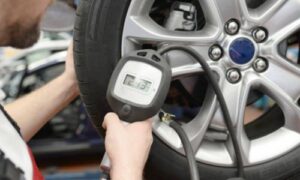Tire alignment, or wheel alignment, is a crucial vehicle maintenance process. It involves adjusting the angles of the wheels to ensure they are set to the car manufacturer’s specifications. Proper tire alignment is essential for several reasons, including providing safe driving, extending tire life, and improving fuel efficiency.
The Importance of Tire Alignment
Tire or wheel alignment is a critical aspect of vehicle maintenance. It involves adjusting the angles of the tires to ensure they are set according to the manufacturer’s specifications. This process ensures that the tires interact correctly with the road surface, promoting safe driving, reducing tire wear, and enhancing fuel efficiency.
Uneven Tire Wear
When tires are not aligned properly, certain tires can wear out faster than others. This occurs because misaligned tires do not evenly distribute the vehicle’s weight across the tire tread. Over time, the areas of the tire that bear more load will wear down more quickly, leading to uneven tire wear. This can result in frequent tire replacements, which can be expensive. Uneven tire wear can also negatively impact the vehicle’s handling and safety, as worn tires provide less traction and stability.
Poor Fuel Efficiency
Misaligned tires can create additional drag on the vehicle, which means the engine has to work harder to maintain speed. This increased effort leads to higher fuel consumption. Properly aligned tires reduce rolling resistance, which in turn improves fuel efficiency. Ensuring your tires are aligned correctly can save you money on fuel in the long run and reduce your carbon footprint.
Vehicle Pulling
If your car pulls to one side while driving, it is often due to misaligned tires. This can make it challenging to keep the vehicle straight, which is frustrating and dangerous. Consistently correcting the steering to keep the car on a straight path can lead to driver fatigue and increase the risk of accidents. Proper alignment ensures the vehicle drives straight and true without requiring constant steering adjustments.
Steering Problems
Misaligned wheels can cause the steering wheel to be off-centre when driving straight. This misalignment can make it difficult to control the vehicle effectively, especially at higher speeds. Additionally, it can lead to increased wear and tear on the steering system components, resulting in costly repairs. Proper alignment keeps the steering system working efficiently and ensures the steering wheel remains centred when driving straight.
Cost of Tire Alignment

Key Components of Tire Alignment
Tire alignment focuses on three main aspects: camber, caster, and toe. Each angle is crucial in ensuring the tyres interact correctly with the road surface and each other.
Camber
Camber refers to the inward or outward tilt of the tire when viewed from the front of the vehicle. The camber angle affects how much the tyre’s surface contacts the road.
- Negative Camber: If the top of the tire tilts inward, it is called negative camber. Negative camber improves cornering performance and stability by allowing more of the tire to stay in contact with the road during turns. However, excessive negative camber can lead to increased wear on the inside edges of the tires.
- Positive Camber: If the top of the tire tilts outward, it is called positive camber. Positive camber is typically used in vehicles designed to carry heavy loads, as it helps distribute the load evenly across the tire. However, too much positive camber can cause uneven wear on the outside edges of the tires.
Proper camber ensures even tire wear and optimal handling performance.
Caster
The caster is the angle of the steering axis when viewed from the side of the vehicle. It is crucial for maintaining stability and steering control.
- Positive Caster: A positive caster means the steering axis tilts toward the driver. This setup enhances straight-line stability and improves steering wheel returnability after a turn. It also helps the vehicle maintain better control at higher speeds.
- Negative Caster: The negative caster tilts the steering axis away from the driver. While this setup can make steering lighter and easier at low speeds, it can reduce stability and control at higher speeds.
Proper caster adjustment is essential for achieving a balanced steering feel and maintaining vehicle stability.
Toe
Toe alignment refers to the direction of the tires point relative to the vehicle’s centerline.
- Toe-In: When the front edges of the tires point inward toward each other, it is called toe-in. Toe-in can improve straight-line stability but may cause the tires to wear on the outer edges if excessive.
- Toe-Out: When the front edges of the tires point outward, it is known as toe-out. Toe-out can enhance cornering responsiveness but may lead to inner tire wear if overdone.
Correct toe alignment is critical for ensuring straight-line stability and even tire wear.
Signs Your Car Needs a Tire Alignment
Several indicators suggest your vehicle requires a tire alignment. Recognizing these signs early can prevent further damage and ensure safe driving.
Uneven Tire Wear
If you notice that the tread on your tires is wearing down unevenly, it might be time for an alignment. Uneven wear patterns can include excessive wear on one edge of the tire or a cupping pattern. Inspecting your tires regularly and promptly addressing uneven wear can save you money on premature replacements.
Steering Wheel Off-Center
If your steering wheel is not centred when driving straight, this is a sign of misalignment. You should not have to adjust your steering wheel to keep the vehicle straight. An off-centre steering wheel indicates that the alignment angles are incorrect and need adjustment.
Vehicle Pulling to One Side
If your car pulls to the left or right while driving, it could indicate that your wheels are not aligned properly. This pulling can make driving uncomfortable and unsafe. Ensuring your tires are correctly aligned will help the vehicle track straight without constant steering corrections.
Vibration in the Steering Wheel
If you feel a vibration in the steering wheel while driving, it might be due to misaligned tires. Vibration can result from incorrect tire tracking, causing uneven road contact. Addressing alignment issues can eliminate this vibration and improve the overall driving experience.
Improper alignment can reduce tire life by 15%-20%.
Causes of Misalignment
Several factors can cause your tires to become misaligned. Understanding these causes can help you take preventative measures.
Hitting Potholes
Driving over potholes or hitting curbs can knock your wheels out of alignment. The impact from hitting a pothole can damage the suspension components, leading to misalignment. Being cautious and avoiding potholes can help maintain your vehicle’s alignment.
Accidents
Collisions, even minor ones, can affect your vehicle’s alignment. The force from an accident can shift the alignment angles and damage suspension parts. After any collision, it’s essential to have your alignment checked to ensure the vehicle is safe to drive.
Wear and Tear
Over time, parts of your vehicle’s suspension system can wear out, leading to alignment issues. Bushings, ball joints, and tie rods can deteriorate, affecting alignment. Regular maintenance and inspections can identify worn components before they cause significant alignment problems.
Modifications
Changing the height of your vehicle or installing new suspension components can impact alignment. When making modifications, such as lifting or lowering the car, it’s crucial to have the alignment checked and adjusted to account for the changes. This ensures that the vehicle handles correctly and the tires wear evenly.
Benefits of Regular Tire Alignment
- Extended Tire Life: Regular alignments can prevent uneven wear, ensuring your tires last longer.
- Improved Fuel Efficiency: Proper alignment reduces rolling resistance, improving fuel economy.
- Enhanced Safety: Properly aligned wheels ensure better handling and control, reducing the risk of accidents.
- Smooth Driving Experience: Your vehicle will drive more predictably with aligned tires.
How Tire Alignment is Performed
Tire alignment should be done by a professional technician using specialized equipment. Here’s a general overview of the process:
- Inspection: The technician will first inspect the tires and suspension system for visible damage or wear.
- Measurement: Using an alignment machine, the technician will measure the current alignment angles of the wheels.
- Adjustment: The technician will adjust the wheel angles to match the manufacturer’s specifications. This involves changing the camber, caster, and toe.
- Test Drive: After making the adjustments, the technician will take the vehicle for a test drive to ensure everything is properly aligned.
How Often Should You Get a Tire Alignment?
It’s recommended to check your alignment every 6,000 to 10,000 miles or at least once a year. However, if you frequently drive on rough roads or have had an accident, you should get your alignment checked more often.
DIY vs. Professional Tire Alignment
While some car enthusiasts attempt DIY alignments, having a professional perform this service is generally recommended. Professional alignment ensures precision and uses advanced equipment to accurately measure and adjust the alignment.
Closing of Tire Alignment
Tire alignment is an essential part of vehicle maintenance. Proper alignment ensures safety, improves fuel efficiency, and extends the life of your tires. If you notice any signs of misalignment, such as uneven tire wear, vehicle pulling, or steering issues, it’s important to have your alignment checked by a professional technician. Regular alignments are a small investment that can save money and ensure a smooth and safe driving experience.






